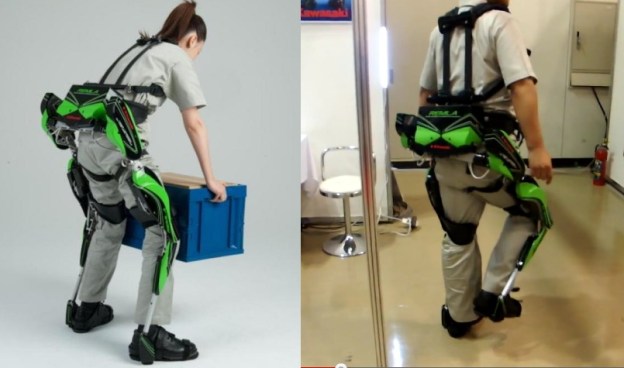
If you’re rich and want to lift a lot of heavy things by yourself, boy do we have a suggestion for you. Kawasaki is working on a wearable robotic exoskeleton called the Power Assist Suit, reports Robonable.jp (via TechCrunch). This exoskeleton can help you lift objects as heavy as 30-40 kg (66-88 lbs) without any muscle strain. When you pick up a package using the Suit, sensors automatically detect the weight, causing four small motors in the knees and hips to fire up and take the load off of your fragile legs and back.
The suit is designed so that wearers don’t really feel the weight of all the mechanics while walking around. It can also be adjusted to different heights.
Don’t get too excited though. Kawasaki plans to test the suit for another one or two years before putting it on the market. That should give us all plenty of time to seek out a list of things we’d like to lift. There is no word yet on how much the contraption will cost, but can you really put a price on looking this cool?


